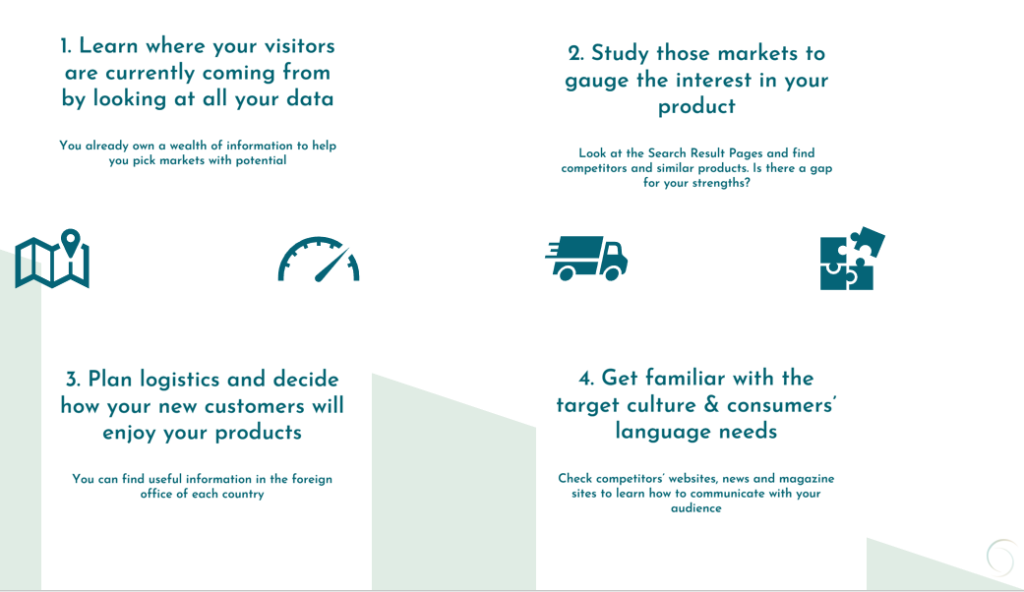"I want to grow internationally – where do I start?"

As online marketing is booming all over the world, the potential for growth by tapping into international markets is immense. E-commerce is expected to reach $4.9 trillion globally in 2021 and the proportion of international sales is also growing, with cross-border shopping now 25% more frequent than only a few years ago. With these prospects more and more companies are starting to consider how best to set foot in foreign markets.
However, knowing where to start is a challenge. Yes, I want to grow internationally! Now what?
1. Learn where your visitors are currently coming from by looking at all your data
You already own a wealth of information to help you pick markets with potential
2. Study those markets to gauge the interest in your product
Look at the Search Result Pages and find competitors and similar products. Is there a gap you can fill?
3. Plan logistics and decide how your new customers will get to enjoy your products
You can find useful information in the foreign office of each country
4. Get familiar with the target culture & consumers’ language needs
Check competitors’ websites, news and magazine sites to learn how to communicate with your audience.
Starting with these 4 Initial considerations will help you narrow down the world into countries with potential and ensure all potential issues are ironed out soon enough.

1. By looking at your analytics data you can start understanding if you already have any website visits coming from abroad. Your e-commerce data will tell you the countries where your sales work and the average purchase value of your orders. These give valuable information to start understanding to what extent your brand is already known in a given market, and this will impact the level of effort that will be required to enter that market. Shortlist countries where your website already gets visitors from.
2. The second step involves looking at the shortlisted markets in more detail.
You can start by searching for your main products online. Studying the search result pages will give an indication of how much interest there already is in the market. Are there many products like yours? Can you identify a gap that you can fill? How do your unique selling points compare with the existing offering?
High demand for your products is good, as it indicates that there is interest, however, if there are already a lot of companies fulfilling these needs, competition will be steep. This is where your unique selling points will help you stand out. Evaluate your strengths and weaknesses.
Plot the pros and cons of each country.
3. Move onto looking at fulfilment of your orders. Consider delivering options, currencies and customer service.
Also, getting familiar with local regulations at this stage is important. For example, you will want to know of any bans or special requirements in importing any of your materials into the country. You do not want to be ready to launch only to find out that you need a ton of paperwork.
4. Lastly, consider the language and localization needs of the selected countries. Get familiar with the target culture, how consumers’ expect to be treated online. Missing cultural nuances has been the cause of the failure of more than one brand online.
Your content, images and language are the first encounters that your customers will have with your brand and you do not want to get it wrong. Getting the trust of your audience from day one will smooth your path and help position your brand the right way, showing care and attention
